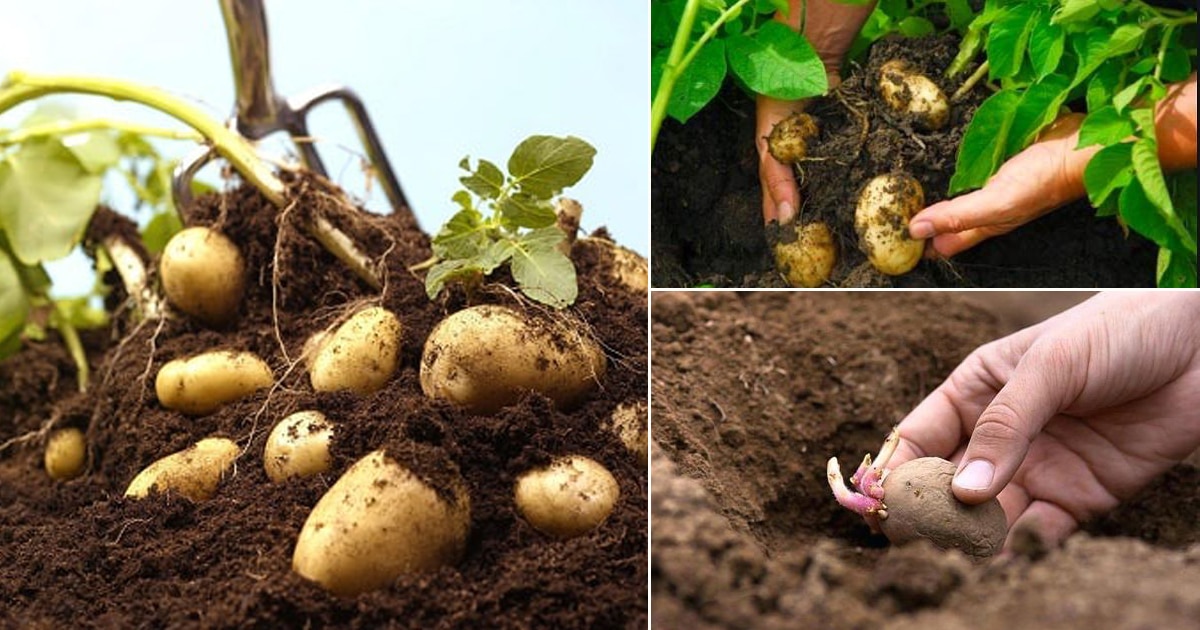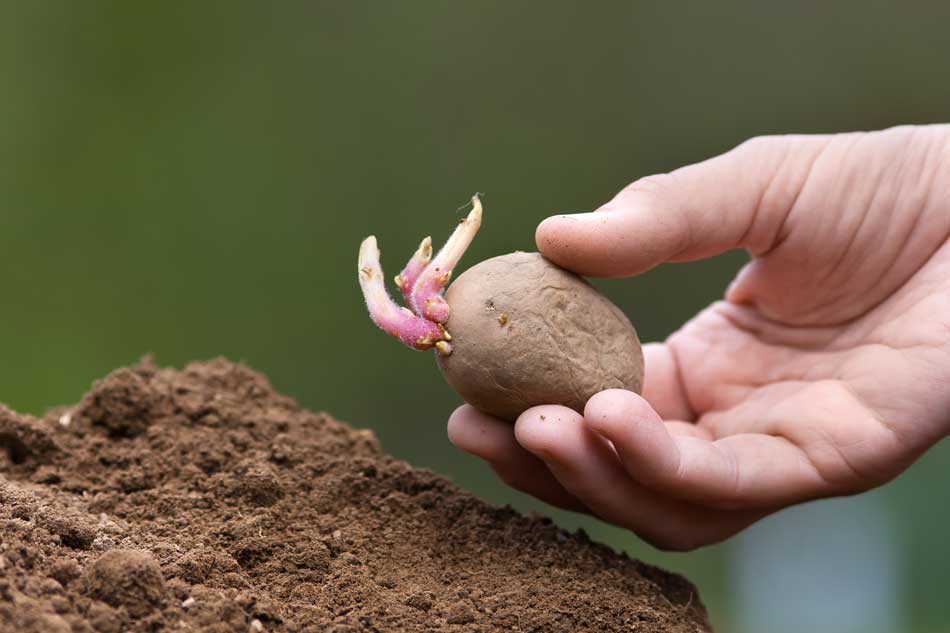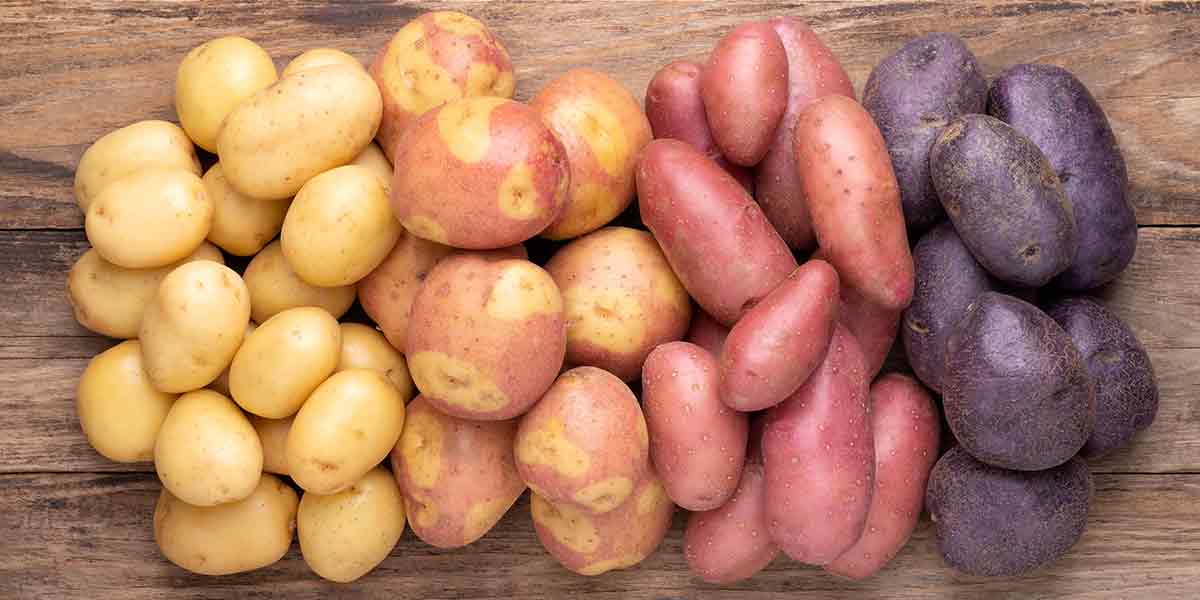
It isn’t easy to think of protein accompaniments and that the classic potato does not come to your head. Whether they are fried, baked, steamed, mashed, with sauces, there are many ways to enjoy them. But do you know how to grow potatoes? You will be surprised how simple it is and how many potatoes a plant produces.
The potato is a vegetable that few people do not like. Its multiple forms of use and neutral but interesting flavor make it the most crucial tuber, at least in some countries of the world.
The potato plant, also known as Solanum tuberosum, is ancient. It is believed that its origin is in South America about 8000 years before Christ, specifically in the Andean highlands. During the Spanish conquests, it was taken from Peru to Spain, and the rest is history. There are more than 5000 varieties of potato, and each country has one that is the most common. However, only in Peru can you find about 1500 varieties.
Having your potato plant is very easy. You have to follow some instructions on how to plant potatoes and be patient.
How the Potato Reproduces
Place the potatoes you want to plant in an ideal space with natural light for 6 weeks or until you see the sprouts appear. It is advisable to start this process after the last frost (a perfect potato planting time). If you want to get small potatoes, leave 5 sprouts or more in your potatoes. On the other hand, remove the sprouts until there are only 3 per potato left if you want large ones.
It is one of the easiest potato germination processes out there. And they will be great for you to start growing potatoes at home at once; something that, you will see, is not as complicated as you might think.
Of course, if you have access to potato seeds, you can also try to germinate them and thus obtain your sprouts that you will then plant in pots or soil. To sow potatoes without fear!
How to Plant Sprouted Potatoes

One of the simplest ways to plant seedless potatoes is to take advantage of a sprouted potato, thus avoiding the sprouting process. You just have to start with the potato planting following the same steps detailed above.
Potato land must be fertile. They require aerated soils, rich in organic matter, well-drained, and at least 60 centimeters deep. They adapt to dry land and pots, so you don’t need a lot of space to have a potato plant. If you decide to do it on the ground, without pots, you must introduce the potatoes with distances of 40 centimeters.
Potato planting time is spring for temperate climates and late winter for hot climates. But how many potatoes does a plant produce? It depends on many factors, the environment, the plant, and care, but it can grow from 2 to 10 potatoes, although it can reach an incredible number of 20 tubers under optimal conditions.
- The sowing process is very simple, introduce the potato between 5 and 10 centimeters below the ground with the sprouts facing up.
- Then water a little each day, and with time, you will see that the plant will develop. Potatoes grow underground, so the amount and size of your production will be a surprise until the potato harvest.
Popular wisdom is that we should not eat sprouted or green potatoes as they contain solanine which can be toxic, even in small amounts. But do not be alarmed. If you remove the green or sprouted part, you can eat it without any problem. Or you can take advantage of those shoots to have your potato plant.
Essential Care
Like all plants, the potato requires some special care, there are few, and it is an exciting crop for those who are beginning to enter the world of gardens.
- Eliminate weeds. In this way, you will avoid pests, diseases, and other plants consume the nutrients you should go for the potato. The same happens with the old and diseased leaves of the potato plant.
- Weekly watering. You must keep the soil moist but not saturate the earth, your potatoes could rot, and it will be a disappointment to go harvest and not be able to enjoy them.
- Grow herbs. In this way, you will avoid diseases and pests. Mint and rosemary are some of the outstanding options.
- Cover them if necessary. If you notice that the potatoes are growing above the surface, cover them with soil, they should always grow underneath.
You already know how to sow seedless potatoes and their care, and now you only have to wait between 3 and 5 months after planting. You will notice that the leaves turn yellow. At that time, you must stop watering and wait between 5 and 10 days to harvest.
Types of Potatoes

Now that you know how to grow potatoes, surely you will want to know the different varieties that exist. Believe it or not, they are thousands and innumerable. But this list will serve you a lot as an orientation and help you realize the importance and scope of potato production in the world.
- Yellow. One of the most traditional.
- Chacasina. Originally from Peru, an Andean place where there are innumerable quantities of potatoes of all shapes and colors that you can imagine.
- Creole. Very traditional in much of Latin America, especially in Ecuador, Brazil, or Colombia.
- Colorada. A variety has red skin, resembling a sweet potato, but that remains with the characteristics of potato inside.
- Innovator. A kind of potato generated in Holland generates a potato with a creamy interior and healthy, yellowish skin.
- Spunta. Elongated, also a product of genetic modification in Holland.
Other Crops you can Grow
You already know how to plant potatoes, but you can also make a complete garden with your favorite vegetables or fruits. It would help if you had a little space and the necessary tools to carry out a crop.
- Tomato cultivation. A classic on any table, the tomato can be grown on balconies and gardens. Ideal for the summer, you must try a delicious homemade tomato at least once.
- Carrot cultivation. An excellent crop to rotate with the tomato, the carrot is a very nutritious vegetable that cannot be missing from your diet.
- Basil cultivation. Ideal for both sauces and salads, basil has that unique fresh flavor that you cannot miss in your kitchen. It does not require a lot of space and grows well in a medium pot.






